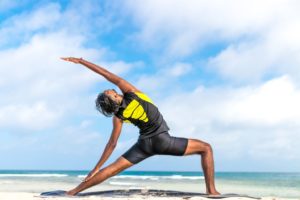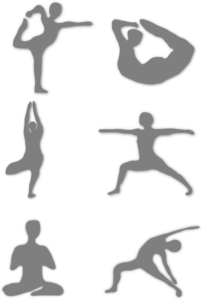In clinic, I will often do a treatment and incorporate some stretches to enhance the effect of the work done on a client. And it feels sooooooo good to be stretched!
But what is it I am trying to achieve?
Why do people incorporate stretching into their exercise program?
What are the benefits of stretching?
Well, there are different types of stretching and in clinic these are used for different purposes. Some examples are listed below.
Fascial stretches: can be long slow holds for a duration of 90s, which try to encourage and lengthen stuck connective tissue called fascia or it could be quite quick movements by the participant to help the fascia to respond under dynamic stress. Individuals often use a foam roller at home or in the gym to help with fascial stretching.
Passive stretches: where a stretch is held for 15-30s. These are great to help soft tissues, perhaps after trigger point work, and give that feeling of lengthening and opening.
PNF (Proprioceptive Neuromuscular Facilitation): Originally devised to help people with stroke recover movement and strength this encourages a client to resist a stretch for a short period of time but then allows the muscle to stretch to a greater degree once the resistance has stopped.
Active Isolated Stretching (AIS): A repetitive stretch that takes the muscle through its full range of movement and only holds the stretch for less than two seconds during which gentle overpressure is applied to enhance the movement before restarting. The repetitions help build stamina and strength.
Soft tissue release (STR): I have included this here as it is a technique I use in clinic to help stretch a muscle and is often used after trigger point work or to help release tension in big muscle groups such as the hamstrings or quadriceps. A muscle is contracted then pressure is applied at a point on the muscle and holds whilst the muscle is stretched. This again is a series of short, quick movements that is repeated at several points along the muscle.
Dynamic stretching: This is usually focused on sport specific movements where you start taking the muscle into a stretch gently and work to increase it taking it though the full range each time.
Ballistic stretching: This type of stretching lost popularity for a while as people were taking it to extremes, basically you take a muscle into a stretch then ‘bounce’ within a short range at the end of the stretch range. You are trying to increase the stretch each time but caution must be used as this type of stretching can lead to injury so it is not advised unless you really know what you are doing!
In addition, stretching as part of a warm up prior to exercising has been shown to reduce the risk of injuries, particularly in impact sports. Again, the type of stretching is important. For example, passive stretching can improve flexibility but decrease power for 30 minutes post stretching, this might be good for gymnasts and yoga practitioners but not so good for weightlifters and rugby players. Dynamic stretching is a useful warm up for many sports that involve sprinting, such as football. A good summary of the different types of stretching and the factors to be considered from a massage therapist perspective can be found in the book Massage Fusion(Fairweather and Mari, 2015:pp.157-176).
 However, the evidence for stretching post event is inconclusive. What is highlighted is how people perceivestretching helps them: it is part of their cool down, enables individuals to feel they are getting rid of muscular tension from their chosen activity; helps them to feel realigned, it is part of their psychological de-stress from the activity; it has meditative effects; it prepares them to calm down the autonomic nervous system, etc.
However, the evidence for stretching post event is inconclusive. What is highlighted is how people perceivestretching helps them: it is part of their cool down, enables individuals to feel they are getting rid of muscular tension from their chosen activity; helps them to feel realigned, it is part of their psychological de-stress from the activity; it has meditative effects; it prepares them to calm down the autonomic nervous system, etc.
This might also explain why some people do not feel the need to stretch after an activity.
Hopefully you can see from the variety of stretches available that there are different goals when using them. The main benefit is always to feel that the soft tissues feel lengthened. Stretching can be used to increase flexibility, to improve strength, to prepare muscles to work optimally under stress and to assist with proprioception. Pre-event stretching minimises injury and post-event stretching has many perceived benefits.
Now this article has been written, I need to get off the sofa and stretch myself!
